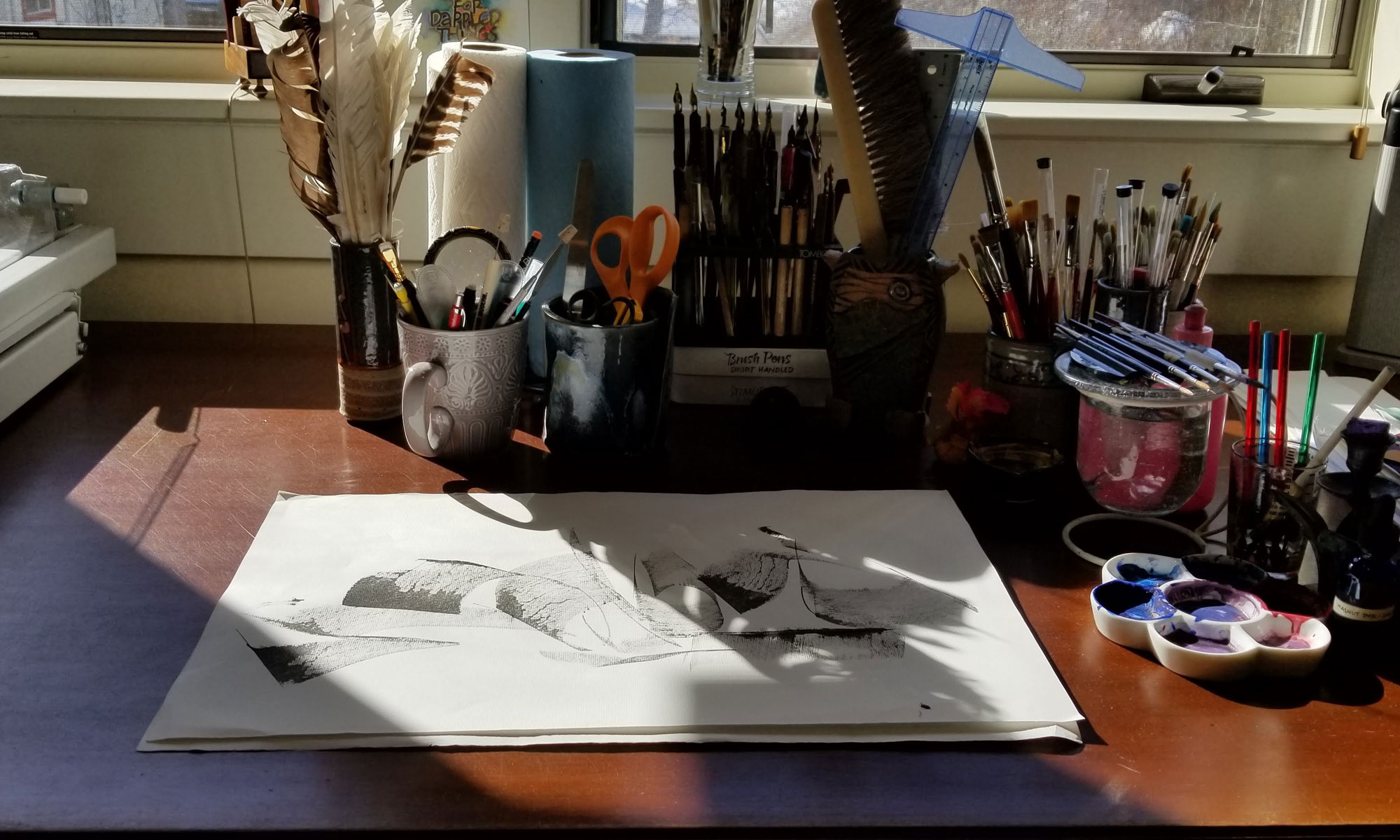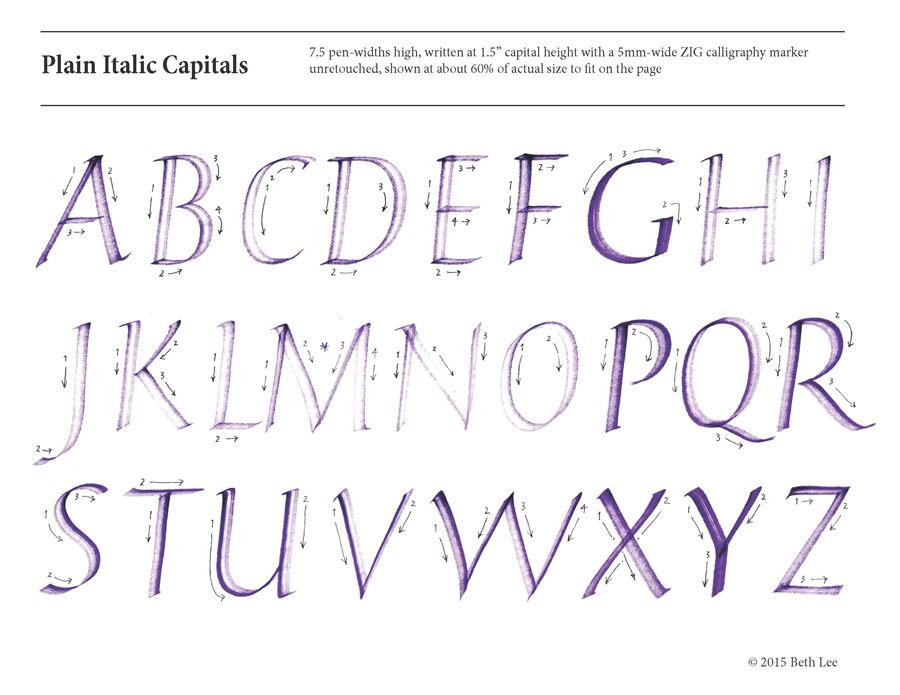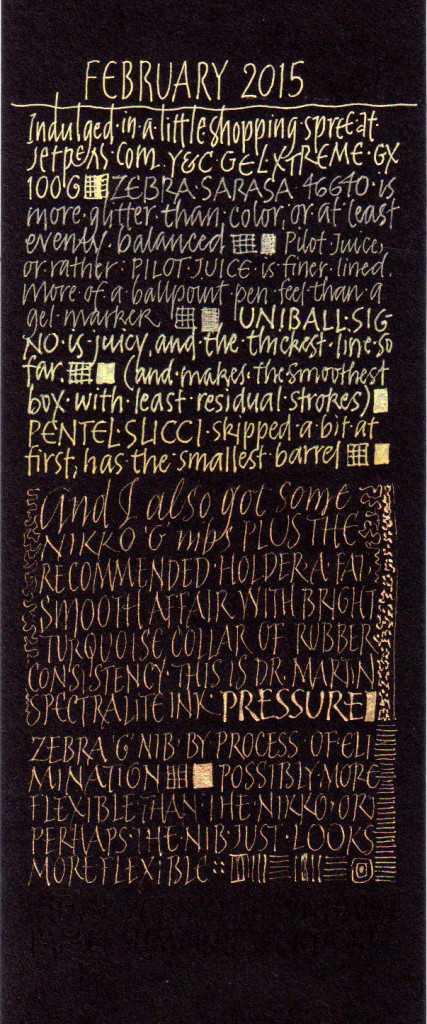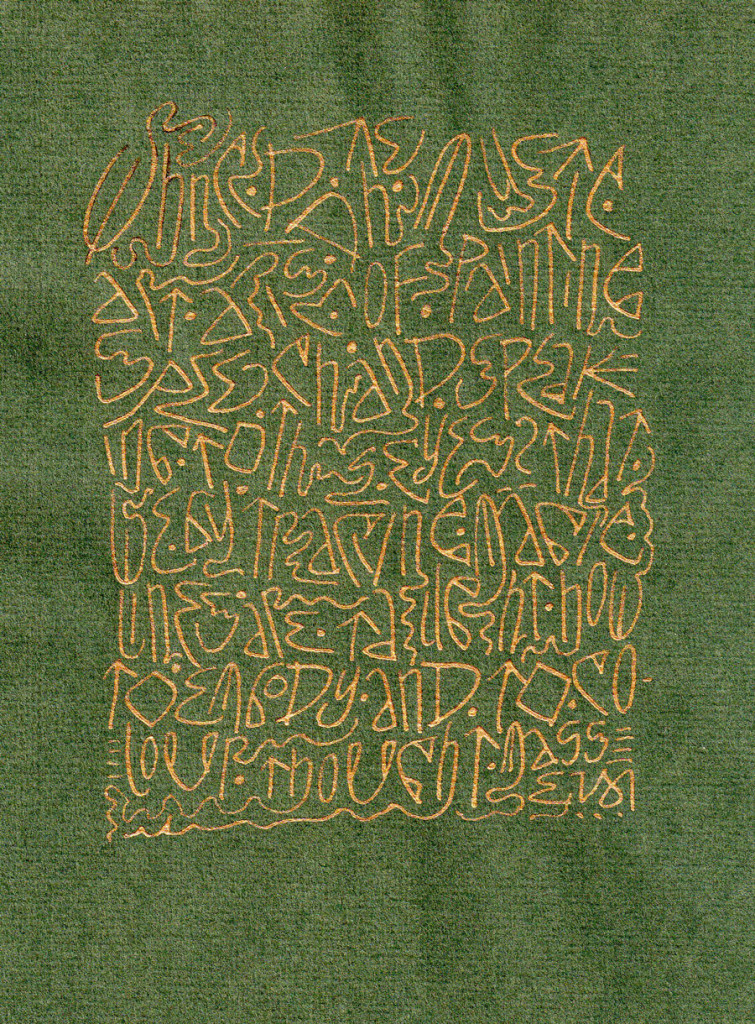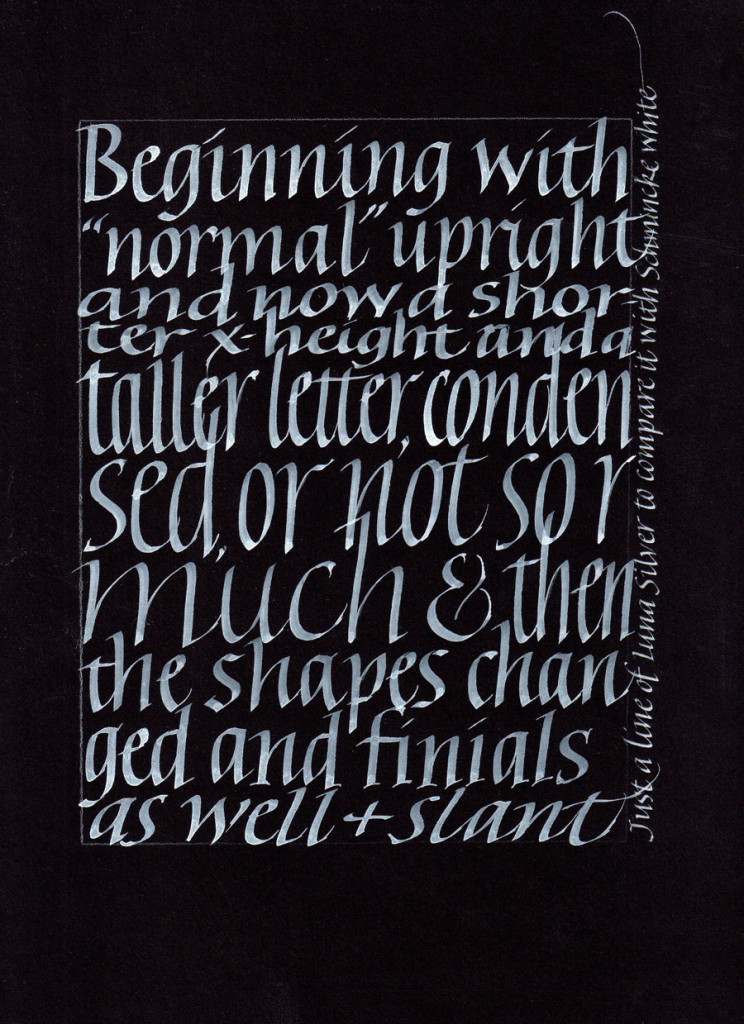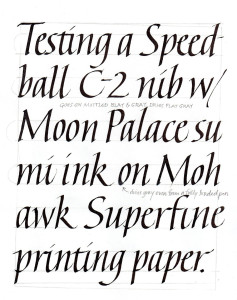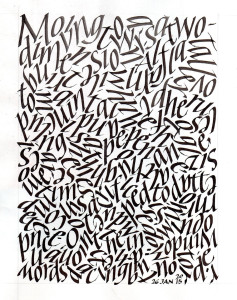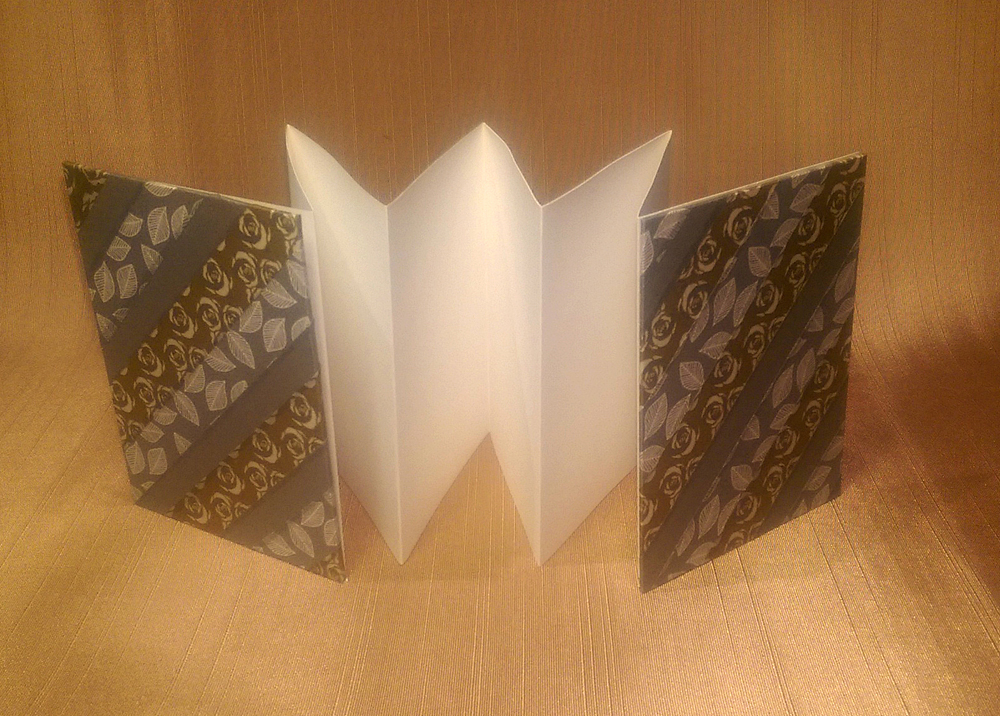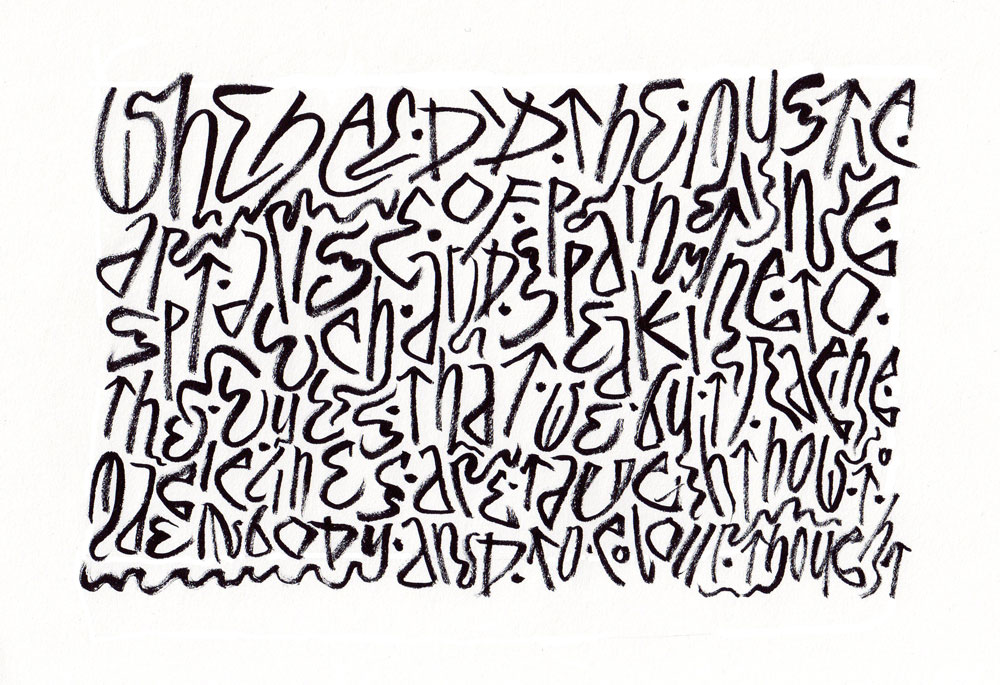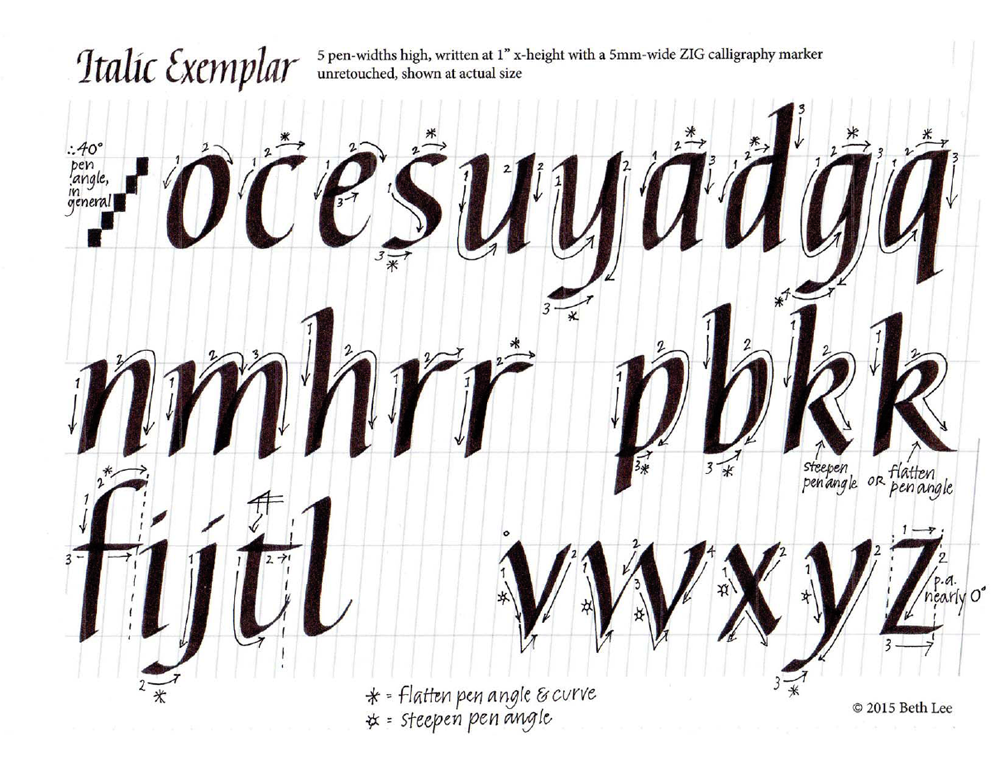Developing an exemplar is one of the most humbling exercises that a calligrapher can undertake. Having spent hours on this one, a number of thoughts tumble (my original typo “thumble” seems apt) through my head, in no particular order:
- In most of my work I usually choose Roman capitals to go with italic minuscules, and it shows here. Which leads me to the specific note …
- G: pick an oval, won’t you? That G bears no resemblance to the C or O or Q.
- D: doesn’t have much base.
- U: there’s an awful lot of skinny in the connecting stroke.
- F: looks like it’s mid-jump on a pogo stick; that’s a paste-up error.
- M: has a heavy top left shoulder.
- W: has an awkward join on the right bottom corner; I’m usually better about that.
- Z: well, I don’t know what exactly, but the base is not straight and it looks wooden; perhaps I should have flattened the pen angle a bit more on the horizontals
- L: although I didn’t spend much time on kerning, the L is noticeably too close to the M. It’s all crowded but I wanted them as large as possible but still fitting on a letter-size page.
- J: also wooden, except where it’s wavy when it shouldn’t be.
Sigh. Well, I do like the P and R … That leaves only 24 letters that need work.
I used a partially dried-out 5mm Zig marker so that students can see how the letters are being made.
